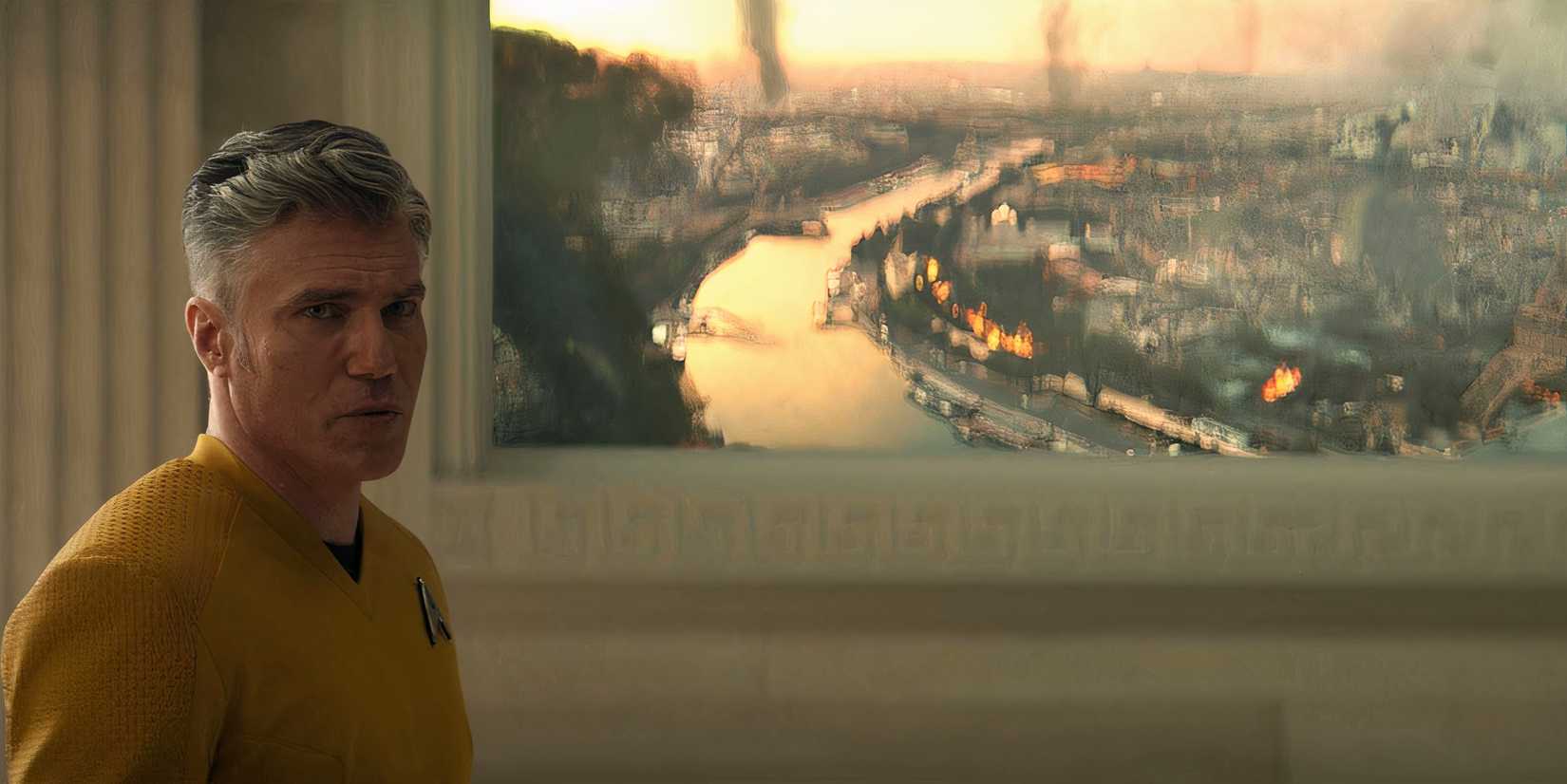Warning: SPOILERS For Star Trek: Strange New Worlds Season 3, Episode 6 – “The Sehlat Who Ate Its Tail”Star Trek: Strange New Worlds season 3 made aspects of Star Trek: Picard season 2’s 21st century timeline even more confusing. Directed by Valerie Weiss and written by Bill Wolkoff and David Reed, Star Trek: Strange New Worlds season 3, episode 6, “The Sehlat Who Ate Its Tail” is a milestone event in Star Trek canon, depicting James T. Kirk’s (Paul Wesley) first mission as a starship captain.
Acting Captain Kirk led the damaged USS Farragut on a desperate mission against a mysterious and overpowering cadre of Scavengers, who had captured the Starship Enterprise. Kirk’s daring risk-taking successfully damaged the Scavengers’ ship, and the Farragut’s assault killed over 7,000 of the heavily armored marauders.
However, Captain Kirk was crestfallen to learn that his adversaries were human beings. The Scavengers were descended from a group of 21st century scientists who left Earth for the stars. Along with questions about how humans could become a scourge that terrorized the distant parts of the galaxy, the Scavengers’ backstory also butts heads with the events of Star Trek: Picard season 2.
Strange New Worlds’ Villain Twist Creates Questions About Star Trek: Picard Season 2’s Ending
Most of Star Trek: Picard season 2 took place in 2024 Los Angeles and centered on Dr. Renée Picard (Penelope Mitchell). The ancestor of Admiral Jean-Luc Picard (Patrick Stewart) was a 21st century NASA astronaut, and Renée was a temporal focal point. Q (John de Lancie) erasing Renée Picard from history would doom the world to the fascist rule of the Confederation of Earth.
Star Trek: Strange New Worlds established that the Scavengers’ ancestors left Earth in the 21st century before First Contact with the Vulcans on April 5, 2063. The intrepid scientists abandoned their homeworld because they felt the climate crisis was too far gone. However, Renée Picard actually fixed Earth’s climate by bringing back a microorganism from Saturn’s moon Europa, according to Star Trek: Picard.
There’s also the question of World War III, which took place in the 21st century and lasted for a generation. Earth was still recovering from World War III in 2063, according to Star Trek: First Contact. This gives a roughly 40-year time period to when the Scavengers’ ancestors fled Earth, but it had to have happened before Renée Picard’s microorganism fixed Earth’s climate.
When Renée Picard and Ricardo Ramirez, the son of Dr. Teresa Ramirez (Sol Rodriguez), who Captain Cristoba Rios (Santiago Cabrera) stayed in the 21st century to be with, fixed the climate crisis wasn’t clear in Star Trek: Picard season 2’s ending. Ricardo was just a boy in 2024, so he must have been an adult, which means it has to be at least sometime in the 2040s or after when Earth’s climate is cleaned up.
Strange New Worlds Just Made Star Trek’s 21st Century More Complicated
The events of Star Trek‘s 21st century timeline were made more confusing by Star Trek: Strange New Worlds even before the Scavengers were introduced in season 3. Star Trek: Strange New Worlds‘ series premiere included the revelation that World War III happened in the 21st century, and has been conflated with the Eugenics Wars, when Earth fought genetically engineered tyrants.
The Eugenics Wars originally took place in the 1990s according to Star Trek: The Original Series.
Star Trek: Strange New Worlds season 2, episode 3, “Tomorrow and Tomorrow and Tomorrow” hinted that Romulan agents fighting in the Temporal Wars were responsible for retcons in Earth’s timeline. One Romulan, Sera (Adeleide Kane), planned to assassinate a young Khan Noonien-Singh (Desmond Sivan), who was now a child in 21st century Toronto, instead of ruling and fleeing Earth in the 1990s.
Star Trek: Picard season 2 even ended with Dr. Adam Soong (Brent Spiner) opening a folder labeled “Project Khan,” hinting at his role in the 21st century creation of Khan Noonien-Singh. As muddled as Star Trek‘s 21st century timeline is now with its recent retcons, Star Trek: Strange New Worlds season 3’s Scavengers complicated it further.
This story originally appeared on Screenrant


